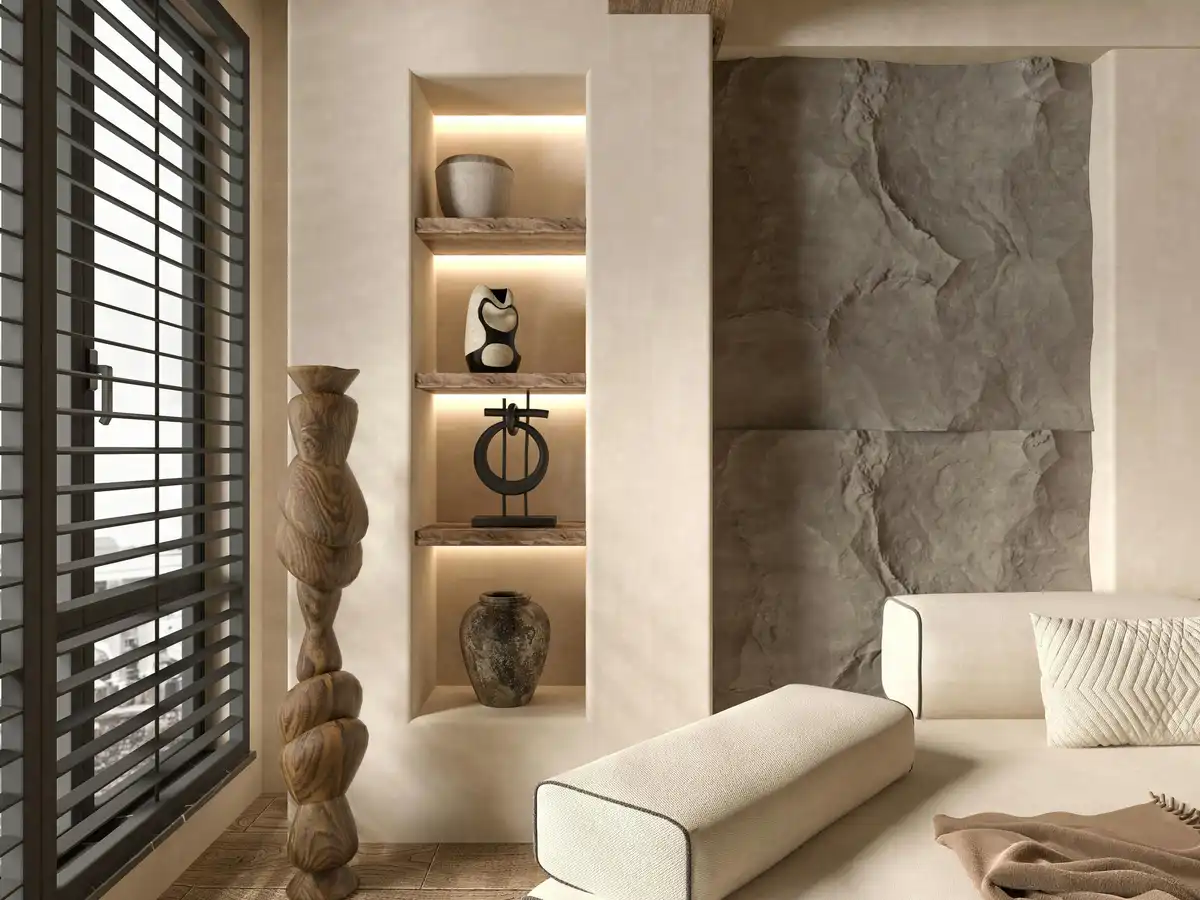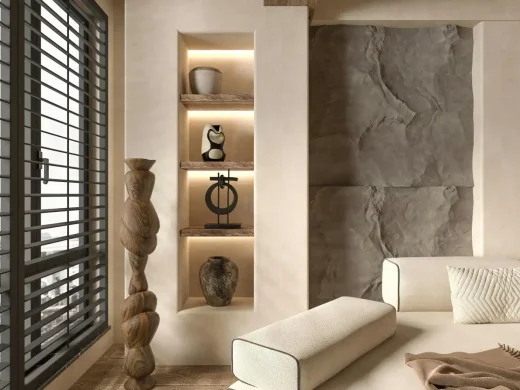Niche Boxes architecture interior design guide, Automate ticket distribution advice
The Art and Science of Niche Boxes: Exploring Their Role in Contemporary Architecture and Interior Design
29 November 2024
Niche boxes have transcended their historical architectural roles to become a versatile element in contemporary design. Initially serving specific functional and aesthetic purposes in classical architecture, they now find their place in modern homes and commercial spaces.
These installations not only enhance the visual appeal but also serve practical purposes, marrying form with function in innovative ways. As we delve deeper into the art and science of niche boxes, we explore their evolving role in the realm of contemporary architecture and interior design, underscoring their significance in today’s aesthetic and practical landscapes.
Historical Evolution of Niche Boxes
The Artistic Heritage and Modern Reinterpretation
Niche boxes have a storied past that dates back to ancient civilizations where they were primarily used in religious and ceremonial spaces for statuary and sacred artifacts. Over the centuries, the functional aspects of niche boxes have evolved, but their capability to draw attention and organize space has remained constant. In the Renaissance, they were ornate and symbolically significant, often used to highlight artwork and architectural craftsmanship.
In contemporary settings, these historical elements are reinterpreted with a modern twist. Designers incorporate sleek, minimalist designs that contrast sharply with the ornate versions of the past. This blend of old and new enhances both private residences and public spaces, providing a nod to architectural heritage while supporting modern usability and style.
The transition from purely decorative to functionally decorative makes niche boxes a unique element in modern architecture, demonstrating how traditional concepts can be transformed to meet contemporary needs and tastes.
Design and Aesthetic Impact
Enhancing Modern Spaces with Strategic Design
Niche boxes are not just architectural elements; they are strategic design tools used to enhance the aesthetic appeal and functionality of a space. The choice of materials can significantly impact the visual outcome, with granite being a popular choice due to its durability and natural beauty. The use of granite adds a luxurious touch to niche boxes, making them not only functional but also focal points in a room’s design.
These installations offer designers the flexibility to incorporate lighting, contrasting materials, or even artwork, turning a simple wall into a statement piece. In residential settings, a granite niche box in a living room might house a cherished sculpture or a series of vases, while in commercial spaces, they can display awards or branded elements in lobbies and conference rooms. The precision required for cutting and fitting granite is facilitated by specialized tools for granite, which ensure that each piece is perfectly tailored to meet design specifications and enhance overall spatial aesthetics.
The design of a niche box can be tailored to complement or contrast with the surrounding environment, making it a versatile tool in the arsenal of an interior designer. Whether the goal is subtlety or prominence, niche boxes can be designed to achieve the desired effect, enhancing the overall spatial experience.
Practical Applications of Niche Boxes
| Location | Use | Benefit |
| Residential Homes | Decorative display shelves | Enhances decor, adds a personal touch |
| Office Settings | Organization of materials | Reduces clutter, improves aesthetics |
| Retail Shops | Product displays | Attracts customer attention to goods |
| Public Buildings | Art installations | Enriches public spaces aesthetically |
Niche boxes serve multifunctional purposes across various settings, demonstrating their practical utility beyond mere decoration. In homes, they are often used to organize and display personal items like books and photographs, adding a personal touch to the living spaces. In offices, niche boxes can help organize documents and materials, streamline the workspace, and maintain a tidy appearance.
Retail environments utilize niche boxes to create visually appealing product displays that can draw in customers and enhance the shopping experience. Public buildings, on the other hand, might use these structures to house art installations, providing aesthetic enrichment in communal areas. The versatility of niche boxes makes them an essential element in both private and public architectural designs, catering to both aesthetic preferences and practical needs.
Technological Advancements in Installation Techniques
With advancements in installation technology, the process of embedding niche boxes into various environments has become more efficient and precise. Modern tools for granite cutting and shaping have revolutionized how these elements are incorporated into design plans. High-precision tools enable designers to create exact cuts and measurements, ensuring that each niche box fits perfectly into its designated space without disrupting the existing structure.
The use of innovative mounting systems, such as go clips, has simplified the installation process, allowing for quicker and more secure placements. These tools not only facilitate the practical aspects of installing niche boxes but also help preserve the integrity of the materials and the aesthetics of the surrounding area. This technological leap in installation methods ensures that niche boxes can be a feasible and attractive option for both new constructions and renovations.
Material Innovation and Sustainability
In the quest for sustainability, material innovation has become a key aspect of modern architecture and design. Niche boxes are at the forefront of this trend, utilizing eco-friendly materials that reduce environmental impact while maintaining aesthetic standards. Recycled materials, sustainably sourced wood, and composites are increasingly used in the creation of niche boxes, reflecting a commitment to environmental stewardship without compromising on style or durability.
These materials are not only chosen for their ecological benefits but also for their ability to mesh with the modern aesthetic of minimalism and functionality. The integration of sustainable materials into niche boxes demonstrates how design elements can be both beautiful and beneficial to the planet, paving the way for future innovations in green architecture.
Case Studies: Successful Integrations of Niche Boxes
Examining specific case studies where niche boxes have been effectively used can provide valuable insights into their practical applications and aesthetic impact. One notable example is a luxury hotel lobby where bespoke granite niche boxes are used to create a dynamic focal point that immediately draws the eye of visitors. Another example could be a residential project where built-in niche boxes are used for storage and display, significantly enhancing the usability and appearance of the living space.
These case studies highlight the adaptability of niche boxes to various settings and purposes, from enhancing luxury aesthetics to improving functional storage solutions. They also underscore the creative possibilities that niche boxes offer to architects and designers seeking to innovate and personalize their projects.
Conclusion
Niche boxes are more than just architectural features; they are a testament to the blend of art and science in modern design. Their ability to transform spaces through both form and function highlights their significance in contemporary architecture and interior design. As we look toward future trends, niche boxes are poised to play an even greater role, driven by advances in materials, tools, and design philosophies. For designers and architects, embracing the potential of niche boxes means creating spaces that are not only visually appealing but also deeply functional and sustainable.
Comments on this guide to The art and science of niche boxes: exploring their role in contemporary architecture and interior design article are welcome.
London Architecture Designs
London Architecture Links – chronological list
182-202 Walworth Road Property Development, Southwark
Design: Howells
182-202 Walworth Road Southwark
Verdant House, Stoke Newington
Architects: CAN
Verdant House Stoke Newington
Building Articles
Architecture – selection:
Comments / photos for the Niche Boxes architecture interior design advice page welcome






